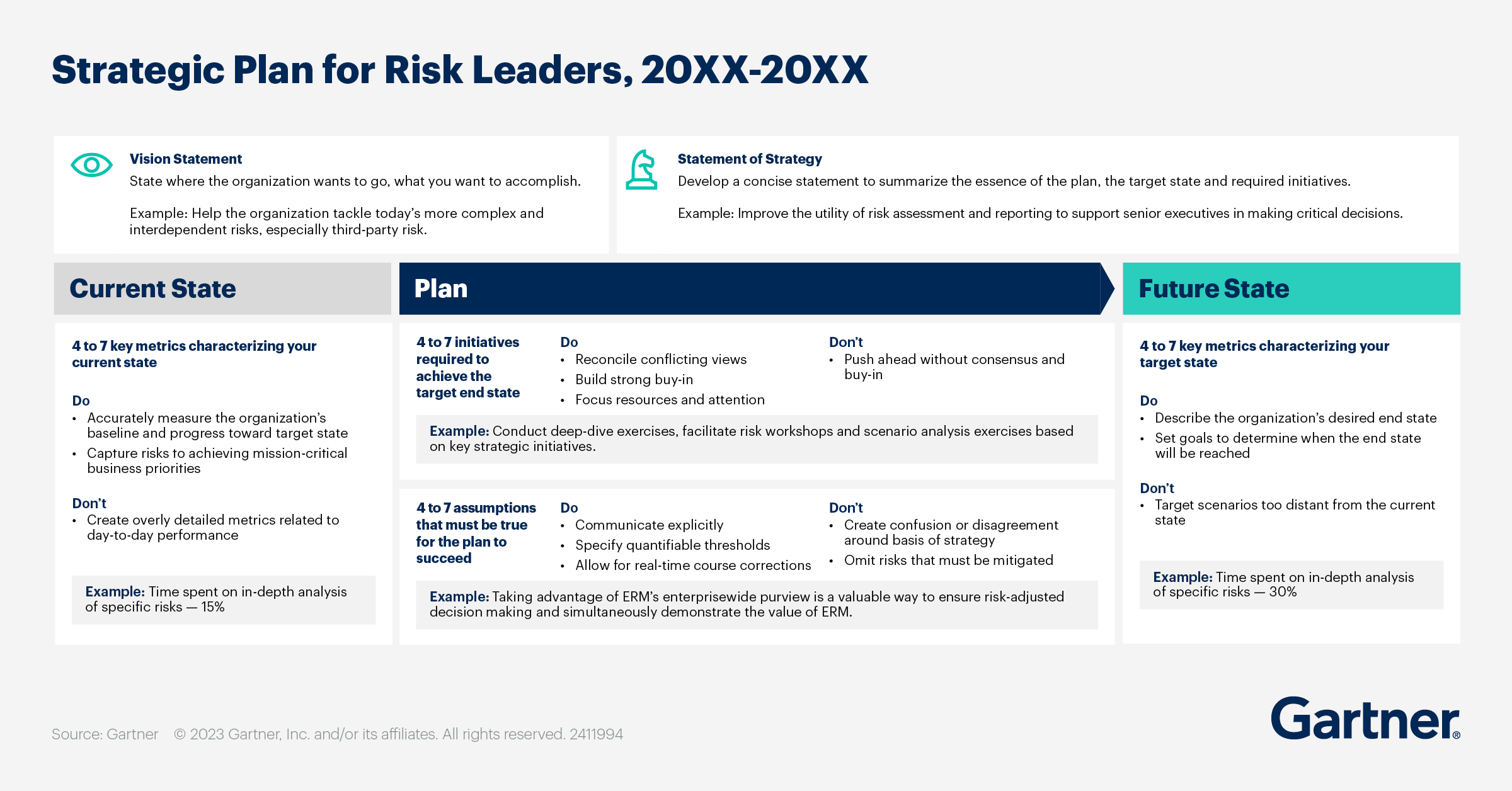A 5-step template for heads of ERM to craft an effective risk management strategy for their function.
- Gartner client? Log in for personalized search results.
Only 52% of heads of ERM collaborate on strategic planning
Effective collaboration across the business is essential for crafting a robust risk management strategic plan that seamlessly aligns your enterprise strategy with specific functional initiatives. When done well, your risk management strategy should provide a clear roadmap for achieving your business goals and integrating your role into the organisation's overarching strategic planning process.
Download the Gartner Risk Management Strategy Template and Toolkit to learn:
- The 5 activities that are key to an impactful risk management strategy
- What tools and frameworks are needed to build a measurable risk management strategy
- How to capture and communicate your strategy to stakeholders with a simple and visually impactful one-page risk management strategy template
More About the Risk Management Strategy Template
The Gartner Risk Management Strategy Template and Toolkit helps heads of ERM define the roadmap for executing the key actions required to meet their ERM department’s strategy initiatives in alignment with the enterprise business model and goals. Leaders can leverage this Risk Management Strategy Template to create and communicate a clear action plan that states where the ERM function currently is, where it needs to be, how to get there and how to measure progress.
Risk Management Strategy FAQs
What is an effective Risk Management Strategy?
A effective enterprise risk management strategy is a functional roadmap that assesses current resources, costs and budget and aligns them with the company’s mission and goals. It sets a plan to align with enterprise goals to grow and innovate, despite changing and often unpredictable business conditions. A risk management strategy sets priorities, manages trade-off decisions and ensure it continues to make critical investments to meet business needs.
What are the 5 key activities for an effective enterprise risk strategy?
- Verify the business context. Confirm the enterprise mission and goals and make sure your employees know how they apply to their everyday work. Align your ERM goals for impact.
- Assess your risk function’s ability to deliver on your goals and create a plan to fill the capability gaps that will slow your impact.
- Strategically manage ERM budgets to prioritise cost, budget and investment decisions to favor initiatives that will drive impact — and demote those that won’t.
- Decide how to measure your progress. Select measures and metrics that will demonstrate the progress you’re making against the commitments you’ve made.
- Document your strategy — ideally on just one page — to simply and clearly state where the risk organisation is, where it is going and how it will get to the future state.
Why should you use our Risk Management Template & Toolkit?
The Gartner Risk Management Template & Toolkit helps ERM leaders develop a multiyear department strategy and implement that strategy through identifying measurable annual targets. Working through this Tool will enable you to:
Develop your strategic plan
Identify key threats, challenges and drivers to address through the strategic plan
Determine priority areas, goals and metrics that will address department and organisational challenges
Prioritise initiatives and track implementation to fulfill your strategic goals
Communicate the strategic plan across the department and organisation
Develop an annual plan based on your multiyear strategy at the start of each year to make progress toward it. The initiatives you plan on an annual basis should contribute to the execution of the multiyear strategy. Annual planning can serve as a course corrector for your multiyear plan if necessary.
